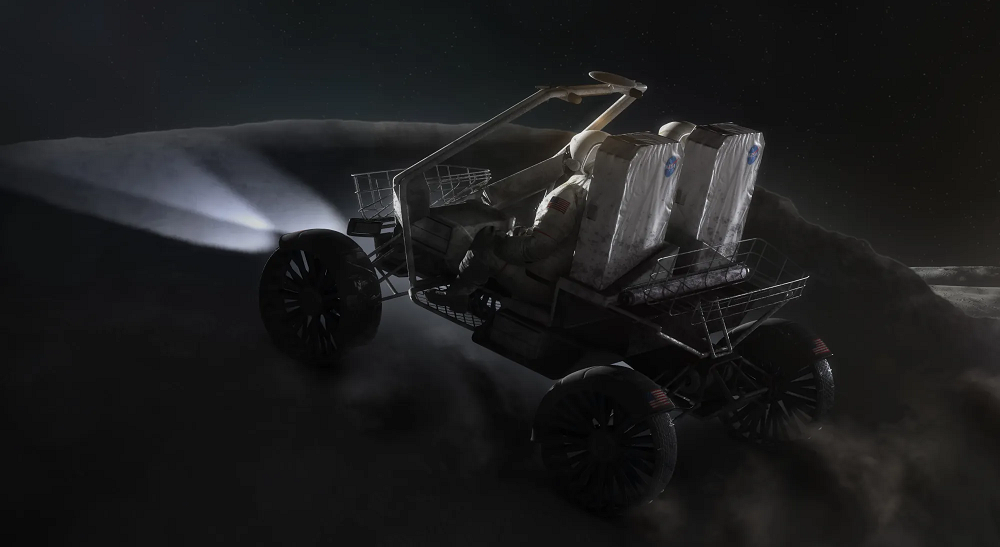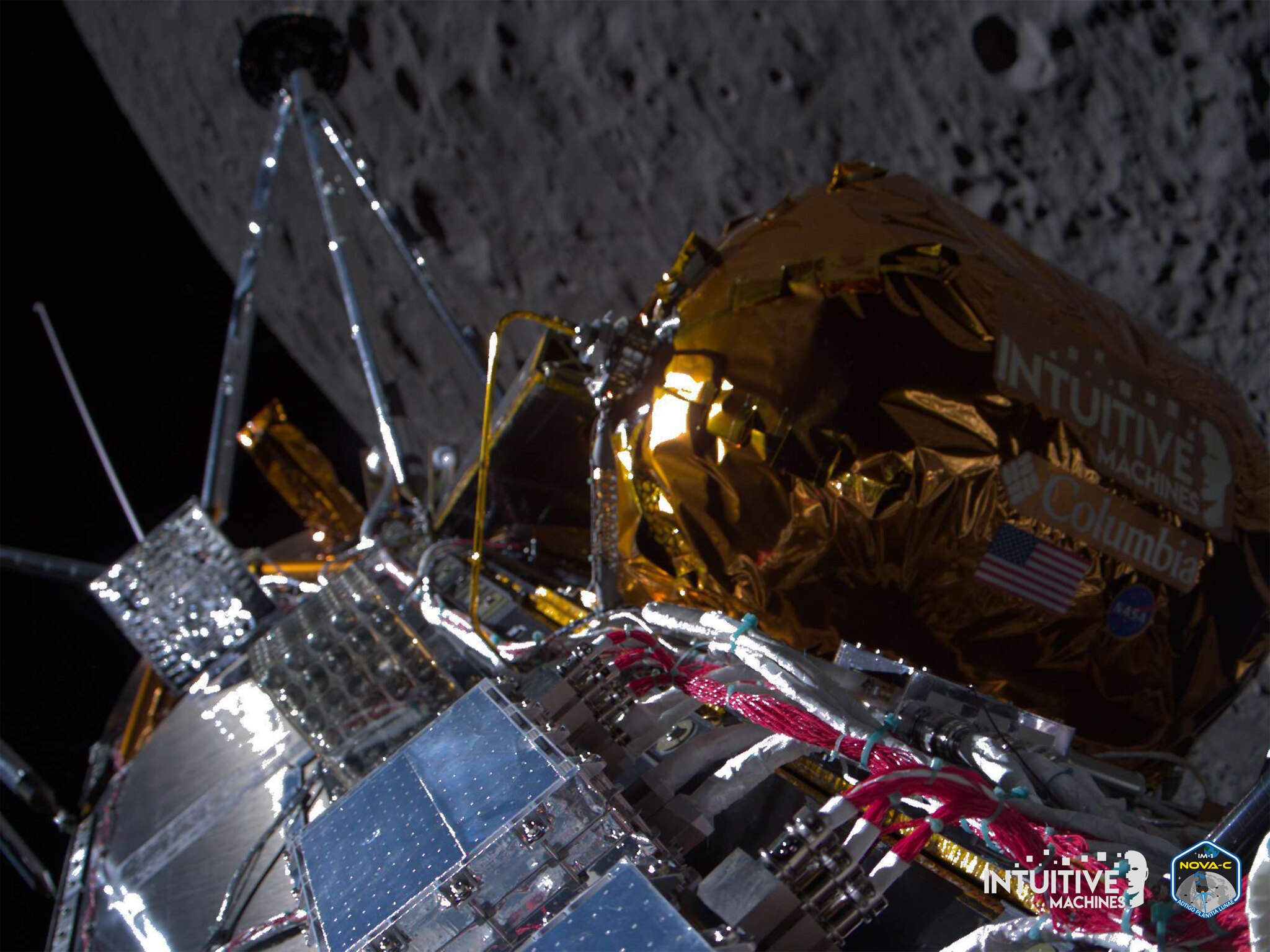RoboGlove Technology First Aided Astronauts, Now Is Marketed to Help Earthbound Workers
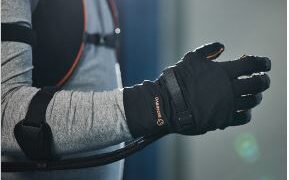 Bioservo developed the Ironhand, an exoskeleton for optimizing hand gesture ergonomics, using NASA’s patented RoboGlove technology. Source: Bioservo
Bioservo developed the Ironhand, an exoskeleton for optimizing hand gesture ergonomics, using NASA’s patented RoboGlove technology. Source: Bioservo 
Exoskeletons that optimize human movements have been a staple of science fiction for decades, but the needs of astronauts aboard the International Space Station (ISS) have brought one such tool to life. Developed by NASA researchers and patented for commercial development, the RoboGlove ergonomically assists the wearer by reducing the hand force needed to use tools during repetitive, exhaustive tasks in challenging environments.
General Motors and NASA began to work together in 2009 after noticing how much of a problem hand fatigue is, especially when working in bulky, pressurized spacesuit gloves.1 They conceived the Human Grasp Assist while developing the Robonaut 2 (R2), the first humanoid robot in space.
Johnson Space Center adapted the Human Grasp Assist into the RoboGlove, a lightweight, tech-boosted glove that enables users to grip tools and perform repetitive movements painlessly for extended lengths of time.
Integrating RoboGlove technology into gloves provides about 10 lbs. of continuous grip strength augmentation.2 The RoboGlove implements a hybrid rigid and soft solution to optimize force transmission, such as in its palm bar, which uses material embedded with rigid 3D-printed components.3 Pressure sensors in the glove’s fingertips, akin to the ones that provide R2 with its sense of touch, detect when a user is grasping something, and the synthetic tendons then automatically pull the wearer’s fingers into a gripping position where they are held until released.4
The Roboglove also uses rigid saddles around the fingers to distribute the force from the glove’s tendon loop evenly and to prevent cinching of the cable loop around the finger.5 A battery pack worn on the belt or as a backpack provides power.
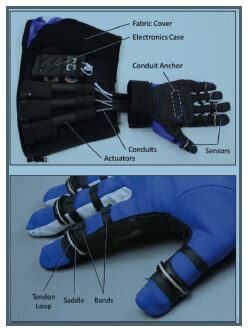
Internal trials on the RoboGlove starting in 2012 put the technology’s possible applications across industries on display. The success of early trials was limited due to poor glove fit; researchers nonetheless accomplished numerous jobs, including installing door glass, crimping, installing weather strips, grasping power tools in a variety of applications, stamping/die pulls where tongs are used, and using a mallet in general assembly. Further tests measured grip strength, assessed dexterity with timed tasks, and examined subjective fatigue and neuromuscular effort.6
RoboGlove has potential beyond space applications to assist manual laborers, such as construction workers, hazardous material workers, or assembly line operators, whose jobs require continuous grasping and ungrasping motion. It also has potential applications in prosthetic devices and rehabilitation aids and may be leveraged to serve people with impaired or limited arm and hand muscle strength. NASA has made the technology available to companies to license or commercialize.7
Ironhand: From the Research Lab to the Factory Floor
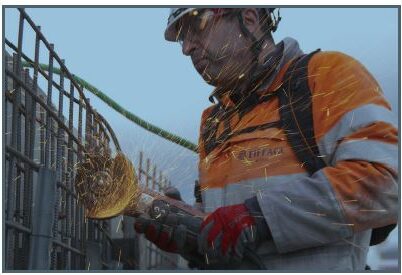
A study by the Chalmers University of Technology in Gothenburg, Sweden, determined that 48% of all injuries reported in a factory involved hand and wrist injuries.8 Hand injuries are the second-most common type of workplace injury according to the U.S. Bureau of Labor Statistics 9 and can be expensive to treat — anywhere from $540 to $26,000 per incident, according to the National Safety Council.10
Recognizing these risks, Bioservo licensed the RoboGlove design from NASA in 2016 and partnered with GM to develop the glove for its workers. GM helped Bioservo test and improve the Ironhand by piloting it in a variety of jobs at its manufacturing plants.11 Bioservo Technologies released an updated version of the Ironhand, deemed Ironhand 2.0, in June 2021, complete with improved activation, better grip, and advanced data collection. The company simultaneously launched the IronConnect Pro application, which collects analytical information from the glove when it is in use and summarizes the data into ergonomic risk assessment reports to track the risk of injury and prevent it.12
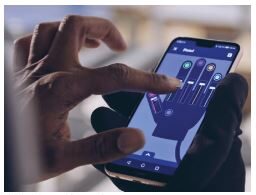
Source: Bioservo
The RoboGlove concept and the subsequent development of the Ironhand are one of the more recent examples of the NASA Technology Transfer Program providing space technology to commercial developers for on-Earth use. The success of this collaboration between government researchers and industry hints at the future such joint work can achieve, and the actualization of exoskeleton technology provides a glimpse of the possibilities space technology yields here on Earth. ABI Research estimated in 2020 that the exoskeleton market, then valued at US$392 million, will grow to US$6.8 billion in global revenue by 2030.13
- Vincent, Brandi. “NASA’s Ready for Companies to Put Its ‘Robo-Glove’ to Use.” Nextgov.Dec. 1, 2020. https://www.nextgov.com/emerging-tech/2020/12/nasas-readycompanies-put-its-robo-glove-use/170394/. Accessed Sept 10, 2021.
- “RoboGlove: A Successful Public-Private Collaboration.” National Institute of Standards and Technology. 2017. https://www.nist.gov/system/files/documents/2017/09/21/joshua_mehling-_roboglove_b.pdf.pdf#:~:text=The%20Human%20Grasp%20Assist%20(RoboGlove,a%20wearable%20grasp%20augmentation%20robot. Accessed Sept 13, 2021.
- Domenico Chiaradia “An Assistive Soft Wrist Exosuit for Flexion Movements with an Ergonomic Reinforced Glove.” Frontiers in Robotics and AI. Jan. 1, 2021. https://www.frontiersin.org/articles/10.3389/frobt.2020.595862/full. Accessed Sept 14, 2021.
- “RoboGlove: A Successful Public-Private Collaboration.” NIST. 2017. https://www.nist.gov/system/files/documents/2017/09/21/joshua_mehling-_roboglove_b.pdf.pdf#:~:text=The%20Human%20Grasp%20Assist%20RoboGlove,a%20wearable%20grasp%20augmentation%20robot. Accessed Sept 13, 2021.
- Domenico Chiaradia “An Assistive Soft Wrist Exosuit for Flexion Movements with an Ergonomic Reinforced Glove.” Frontiers in Robotics and AI. Jan. 1, 2021. https://www.frontiersin.org/articles/10.3389/frobt.2020.595862/full. Accessed Sept 14, 2021.
- “RoboGlove: A Successful Public-Private Collaboration.” NIST. 2017. https://www.nist.gov/system/files/documents/2017/09/21/joshua_mehling-roboglove_b.pdf.pdf#:~:text=The%20Human%20Grasp%20Assist%20(RoboGlove,a%20wearable%20grasp%20augmentation%20robot. Accessed Sept 13, 2021.
- “TECHNOLOGY TRANSFER OPPORTUNITY Robo-Glove (MSC-TOPS-37).” NASA. Nov. 30, 2020. https://sam.gov/opp/d304b9da9ace46d8a6cec62b4b57a9b8/view?index=opp&sort=-modifiedDate&page=1&keywords=wearable&date_filter_index=0&inactive_filter_values=false. Accessed Sept 12, 2021.
- Burtney, Matt . ” Keep facts handy: 5 simple statistics to motivate hand protection” Industrial Safety & Hygiene News. Oct. 6, 2017. https://www.ishn.com/articles/107351-keep-facts-handy-5-simple-statistics-to-motivate-hand-protection. Accessed Sept 15, 2021.
- Clements, Jill A. “Getting a Grip on Hand Impact Injuries.” Occupational Health & Safety. Sept. 6, 2019. https://ohsonline.com/articles/2019/09/06/getting-a-grip-on-hand-impact-injuries.aspx. Accessed Sept 15, 2021
- Bailey, Stephanie. “A robotic ‘Ironhand’ could protect factory workers from injuries,” CNN. May 12, 2021. https://www.cnn.com/2021/05/12/world/ironhand-exoskeleton-glove-spc-intl/index.html. Accessed Sept. 15, 2021
- “Ironhand 2.0 – The new version of award-winning exoskeleton glove.” Bioservo. June 7, 2021. https://www.bioservo.com/press-releases/ironhand-2-0-the-new-version-of-award-winning-exoskeleton-glove. Accessed Sept. 15, 2021.
- “Ironhand 2.0 – The new version of award-winning exoskeleton glove.” Bioservo. June 7, 2021. https://www.bioservo.com/press-releases/ironhand-2-0-the-new-version-of-award-winning-exoskeleton-glove. Accessed Sept. 15, 2021.
- “Exoskeletons in 2020: A Technology Still Finding Its Feet.” Oct. 1, 2020. ABI Research. https://www.abiresearch.com/market-research/product/7778603-exoskeletons-in-2020-a-technology-still-fi/

